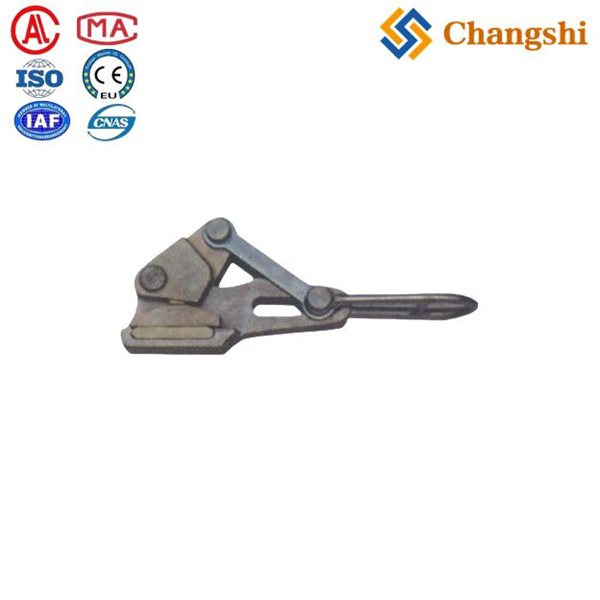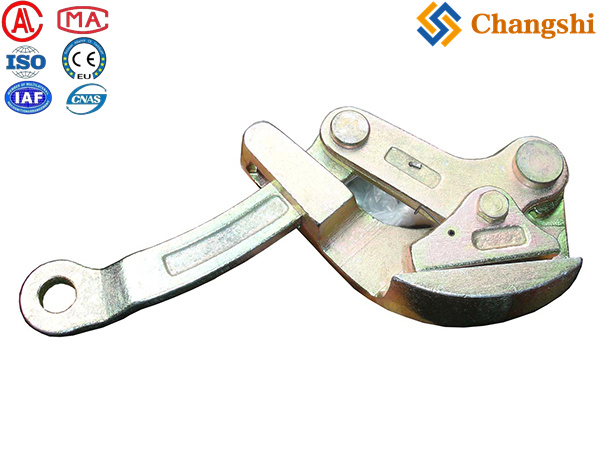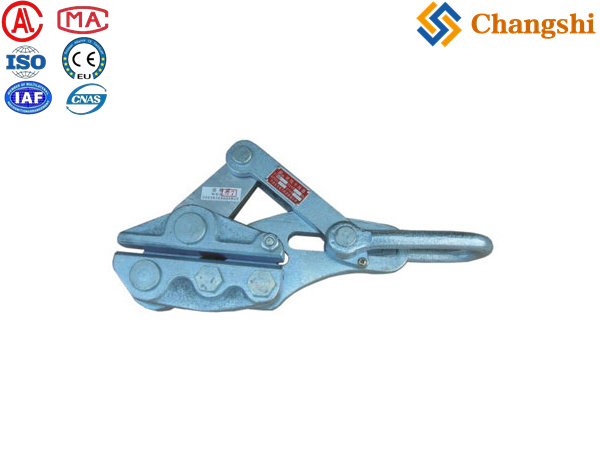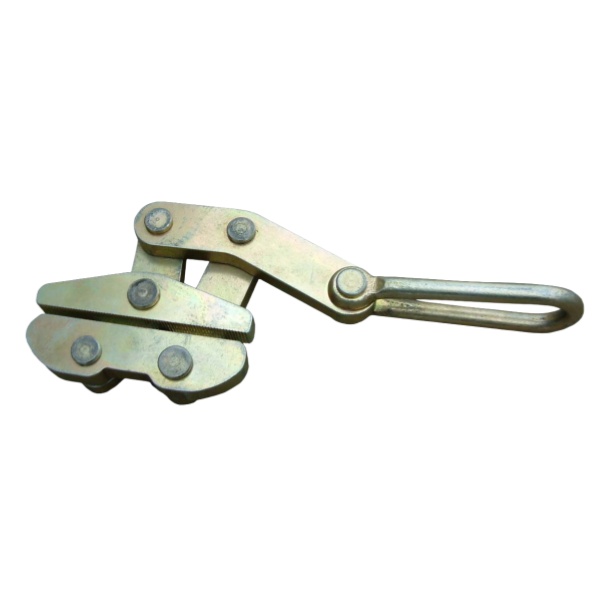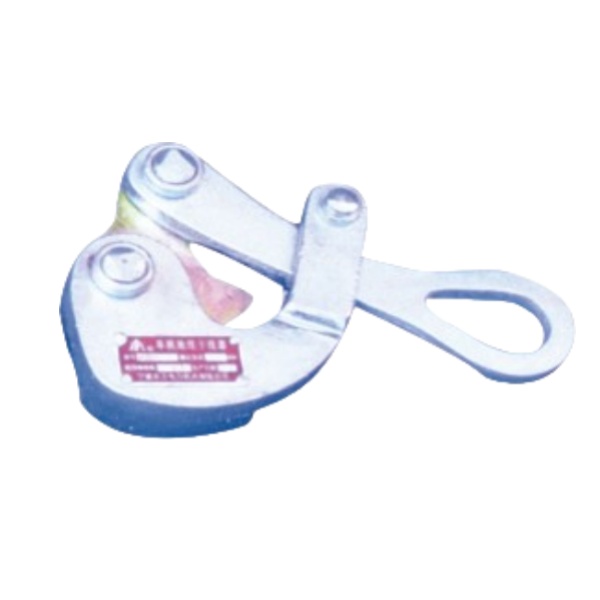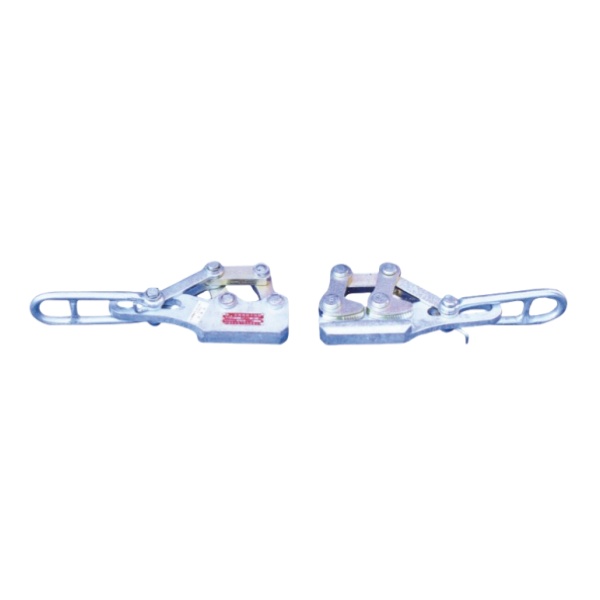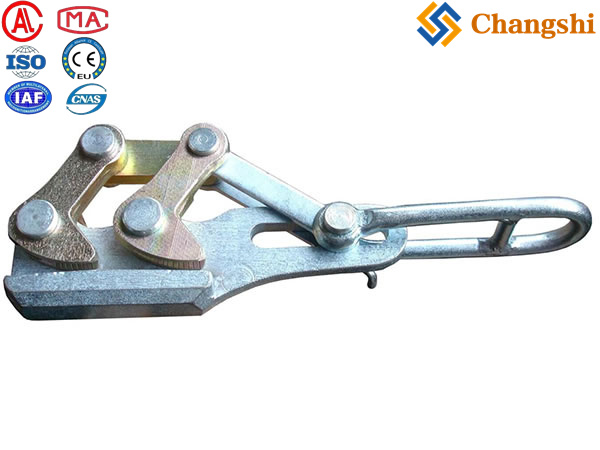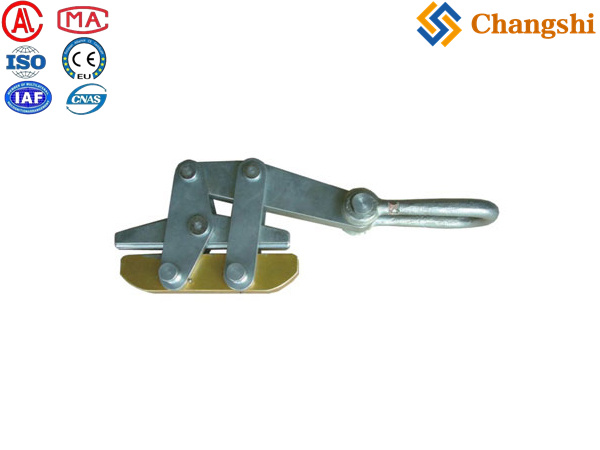
Automatic Self-Gripping Conductor Clamps
Automatic self-gripping conductor clamps, often referred to as "come-alongs" or "wire grips," are essential temporary tools in overhead power line stringing. Their key characteristic is their ability to automatically increase their grip on a conductor as tension is applied, providing a secure and reliable hold without manual adjustment under load.
How Automatic Self-Gripping Conductor Clamps Work:
The "automatic" or "self-gripping" mechanism is typically achieved through a cam-action or parallel-jaw design:
Cam-Action (Common in Chicago Grips and some others):
The clamp has a movable jaw (or jaws) that pivots around a pin.
When the conductor is placed between the jaws and tension is applied to the pulling eye of the clamp, the pulling force acts as a lever.
This lever action forces the movable jaw(s) to rotate and exert increasing pressure onto the conductor, wedging it against a fixed jaw or the body of the clamp.
The harder the pull, the tighter the grip.
Parallel Jaw Design:
These clamps feature two jaws that remain largely parallel as they close onto the conductor.
The gripping force is often generated by a spring mechanism or a system of levers that, when put under tension, pull the jaws together.
The parallel action helps distribute the gripping force more evenly over the conductor's surface, reducing localized stress points.
Key Components & Features:
Body: Usually forged from high-strength alloy steel (often heat-treated and galvanized for corrosion resistance) or high-strength aluminum alloy (for lighter models).
Jaws:
Smooth Jaws: Preferred for bare conductors (aluminum, ACSR, AAC, ACSS, copper) to minimize damage, nicks, or scoring.
Serrated Jaws: Used for better grip on insulated cables, steel wire ropes, or messenger wires where surface damage is less critical.
Interchangeable Liners/Jaws: A highly valuable feature offered by many manufacturers (e.g., Condux Tesmec, Powercom Tools). This allows the same clamp body to be used for conductors of different materials (aluminum, copper, steel, OPGW) and diameters by simply swapping out specialized inserts or liners. This reduces inventory costs and increases versatility.
Liners are often made of aluminum (for aluminum conductors), bronze (for copper or steel), or polyurethane/Adiprene (for OPGW to provide cushioning).
Locking Loop Handles / Latch: Many come-alongs feature a locking mechanism that holds the jaws in an open position for easy placement onto the conductor. Once the conductor is seated, the lock is released, and the clamp is ready to grip.
Pull Ring/Eye: The attachment point for the pulling rope or a hook from a tensioning device.
Advantages of Automatic Self-Gripping Clamps:
Efficiency: Quick and easy to attach and release, speeding up stringing and sagging operations.
Safety: The automatic gripping action ensures a secure hold under tension, reducing the risk of slippage and potential accidents.
Reliability: Designed to maintain a consistent grip as tension changes, crucial for precise sagging.
Versatility: With interchangeable jaws, a single clamp can handle a wide range of conductor types and sizes.
Conductor Protection: When properly selected with the right jaw profile and lining, they minimize damage to the conductor, preserving its integrity.
Applications in Power Line Stringing:
Sag Adjustment: Crucial for precisely tensioning conductors to achieve the specified sag between towers.
Temporary Anchoring: Holding conductors in place at the start or end of a pull, or during splicing operations.
Wire Pulling: Connecting to the pulling rope to pull conductors through stringing blocks.
Dead-Ending (Temporary): Holding conductors while permanent dead-end clamps are installed.

